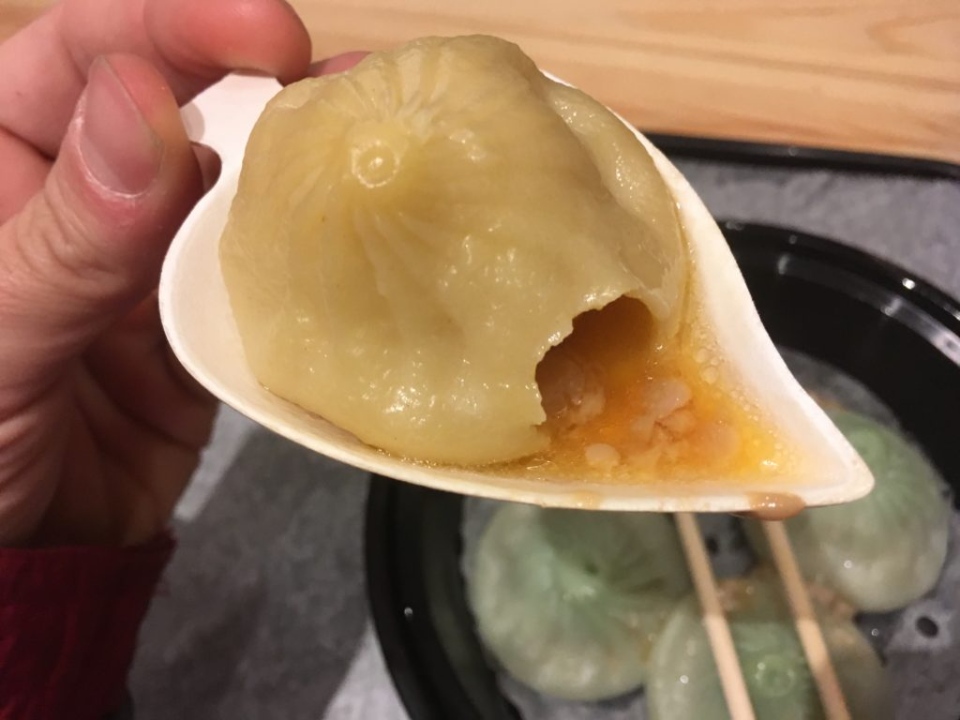5.1 KiB
Nanjing Tangbao: A Culinary Specialty
Key Points
- Nanjing Tangbao are soup-filled dumplings with a rich history and cultural significance in Nanjing, dating back to the Ming and Qing Dynasties.
- Key characteristics include a thin, almost translucent skin, a generous amount of rich broth, and a savory filling, often featuring minced pork and flavorful seasonings.
- Modern adaptations of Tangbao include variations in size, skin thickness, and filling, with some preferring the Nanjing style over the Shanghai Xiaolongbao.
- Numerous restaurants and street food stalls specialize in Tangbao, with Yinshi Jishi Tangbao and Fuzimiao being frequently recommended establishments.
- Tourism in Nanjing significantly impacts the popularity and availability of Nanjing Tangbao, contributing to the protection of cultural heritage and the growth of related industries.
- Preparation involves making a gelatinous pork stock (aspic) that melts into soup when steamed, and high-quality pork is crucial for authentic taste and texture.
Overview
Nanjing Tangbao, also known as soup dumplings, are a traditional delicacy in Nanjing. They have a long history and are culturally significant to the region. These soup-filled buns are known for their flavorful broth and savory filling encased in a delicate wrapper. The meticulous preparation and unique characteristics contribute to their cultural significance in Nanjing.
Detailed Analysis
Historical and Cultural Significance
Nanjing Tangbao has a high reputation dating back to the Ming and Qing Dynasties. Nanjing, as a city with a rich history, features Tangbao as one of its culinary specialties. The rise of tourism in Nanjing promotes the protection of tangible and intangible cultural heritage.
Characteristics and Ingredients
Nanjing Tangbao are characterized by a thin skin and lots of soup. The Nanjing style Tangbao is smaller, with an almost translucent skin and less meat, which has become a preferred style. Key ingredients include minced pork, soy sauce, ginger, garlic, sesame oil, Shaoxing wine, and a gelatinous pork stock (aspic) that creates the soup.
Preparation
The preparation of Nanjing Tangbao involves several key steps: marinating the pork, making the aspic, preparing the dough for the wrappers, filling the dumplings, and steaming them. The sourcing of high-quality pork and the careful preparation of the aspic are crucial for achieving the authentic taste and texture.
Modern Adaptations and Variations
Modern adaptations of Xiao Long Bao are considered by some to be Nanjing Tangbao. Nanjing's Tangbao is slightly different from Shanghai’s Xiaolongbao, being larger with a generous amount of rich broth inside, often served with a straw.
Notable Establishments
Several establishments in Nanjing are renowned for their Tangbao offerings. Yinshi Jishi Tangbao at No. 398 Mochou Road is a recommended place to try Tangbao. Fuzimiao (Confucius Temple) and Hunan Road are also known for their Tangbao. Other famous restaurants include Zhiwei Guan and Zhu Yansheng Tang Bao. Liu Changxing restaurant is recommended for those who prefer more savory dumplings.
Impact of Tourism
The development of Nanjing tourism directly promotes the growth of local transportation, hotels, and retail stores. Tourism significantly impacts the popularity and availability of Nanjing Tangbao, contributing to the protection of cultural heritage and the growth of related industries.
Images of Nanjing Tangbao
Key Citations
-
What to eat in Nanjing? — 11+ best Nanjing street food & Nanjing famous ...
-
Jia Jia Tang Bao, Shanghai - Best xiao long bao in Shanghai? - Foodnut.com
-
Culinary Delights of the South Capital: Top 10 Foods to Eat in Nanjing
-
[PDF] On Study of “Macro-tourism” Industry Theory](https://ccsenet.org/journal/index.php/ijbm/article/download/3779/3389)
-
Easy Tangbao Recipe for Juicy Soup Dumplings - altadiscus.com

